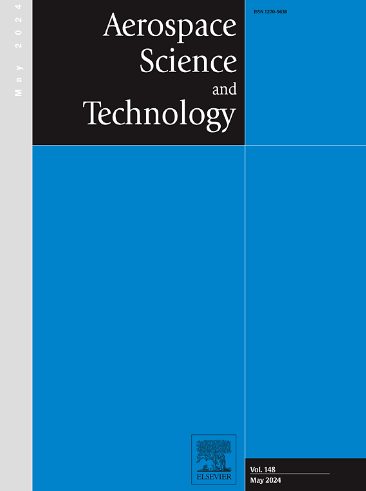Experimental study on aerodynamic performance of turbine blade squealer tip with different trailing edge designs under high-speed relative casing motion
IF 5
1区 工程技术
Q1 ENGINEERING, AEROSPACE
引用次数: 0
Abstract
Over-tip leakage (OTL) flow leads to great aerodynamic performance reduction in high-pressure turbine, reasonable blade tip design can effectively control the loss caused by OTL flow. The relative casing motion is one of the key boundary conditions that can significantly influence OTL flow. In this study, aerodynamical tests were conducted for a high-pressure squealer tip with different trailing edge designs of full cavity squealer tip, pressure-side cutback and suction-side cutback at both stationary and rotating conditions. Loss distribution and blade near tip loading of different trailing edge structures at high-speed rotating condition are firstly reported and evaluated. The result indicates that pressure-side cutback design significantly increases the aerodynamic loss compared with full cavity tip, while suction-side cutback design has close overall loss to full cavity tip. This conclusion was consistent with numerical simulation based on Reynolds-averaged Navier–Stokes computational fluid dynamics (CFD) analysis, which reveals that pressure-side cutback design causes the cavity vortex leaks earlier compared with full cavity tip, a small vortex formed at cut region forms and results in higher total pressure loss. The effect of relative motion between blade tip and shroud reinforces this trend. The total pressure loss difference can reach 42 % compared with 8 % in stationary condition, which indicates that relative casing motion needs to be take into consideration when ranking different tip sealing designs.
不同后缘设计的涡轮叶片尖叫尖在高速相对套管运动下的气动性能实验研究
叶尖过漏(OTL)流会导致高压涡轮机的气动性能大大降低,合理的叶尖设计可以有效控制 OTL 流造成的损失。机壳的相对运动是影响 OTL 流动的关键边界条件之一。本研究对高压涡轮叶尖进行了气动试验,在静止和旋转条件下,叶尖的后缘分别采用了全腔涡轮叶尖、压侧叶尖和吸侧叶尖的不同设计。首次报告并评估了高速旋转条件下不同后缘结构的损耗分布和叶片近尖端负载。结果表明,与全空腔叶尖相比,压力侧后缘设计明显增加了气动损失,而吸力侧后缘设计的总体损失与全空腔叶尖接近。这一结论与基于雷诺平均纳维-斯托克斯计算流体动力学(CFD)分析的数值模拟结果一致,该分析表明,与全腔尖相比,压力侧切设计会更早地导致空腔漩涡泄漏,在切口区域形成的小漩涡会导致更高的总压力损失。叶尖和护罩之间相对运动的影响加强了这一趋势。与静止状态下的 8% 相比,总压力损失差可达 42%,这表明在对不同的叶尖密封设计进行排序时,需要考虑机壳的相对运动。
本文章由计算机程序翻译,如有差异,请以英文原文为准。
求助全文
约1分钟内获得全文
求助全文
来源期刊

Aerospace Science and Technology
工程技术-工程:宇航
CiteScore
10.30
自引率
28.60%
发文量
654
审稿时长
54 days
期刊介绍:
Aerospace Science and Technology publishes articles of outstanding scientific quality. Each article is reviewed by two referees. The journal welcomes papers from a wide range of countries. This journal publishes original papers, review articles and short communications related to all fields of aerospace research, fundamental and applied, potential applications of which are clearly related to:
• The design and the manufacture of aircraft, helicopters, missiles, launchers and satellites
• The control of their environment
• The study of various systems they are involved in, as supports or as targets.
Authors are invited to submit papers on new advances in the following topics to aerospace applications:
• Fluid dynamics
• Energetics and propulsion
• Materials and structures
• Flight mechanics
• Navigation, guidance and control
• Acoustics
• Optics
• Electromagnetism and radar
• Signal and image processing
• Information processing
• Data fusion
• Decision aid
• Human behaviour
• Robotics and intelligent systems
• Complex system engineering.
Etc.
 求助内容:
求助内容: 应助结果提醒方式:
应助结果提醒方式:


